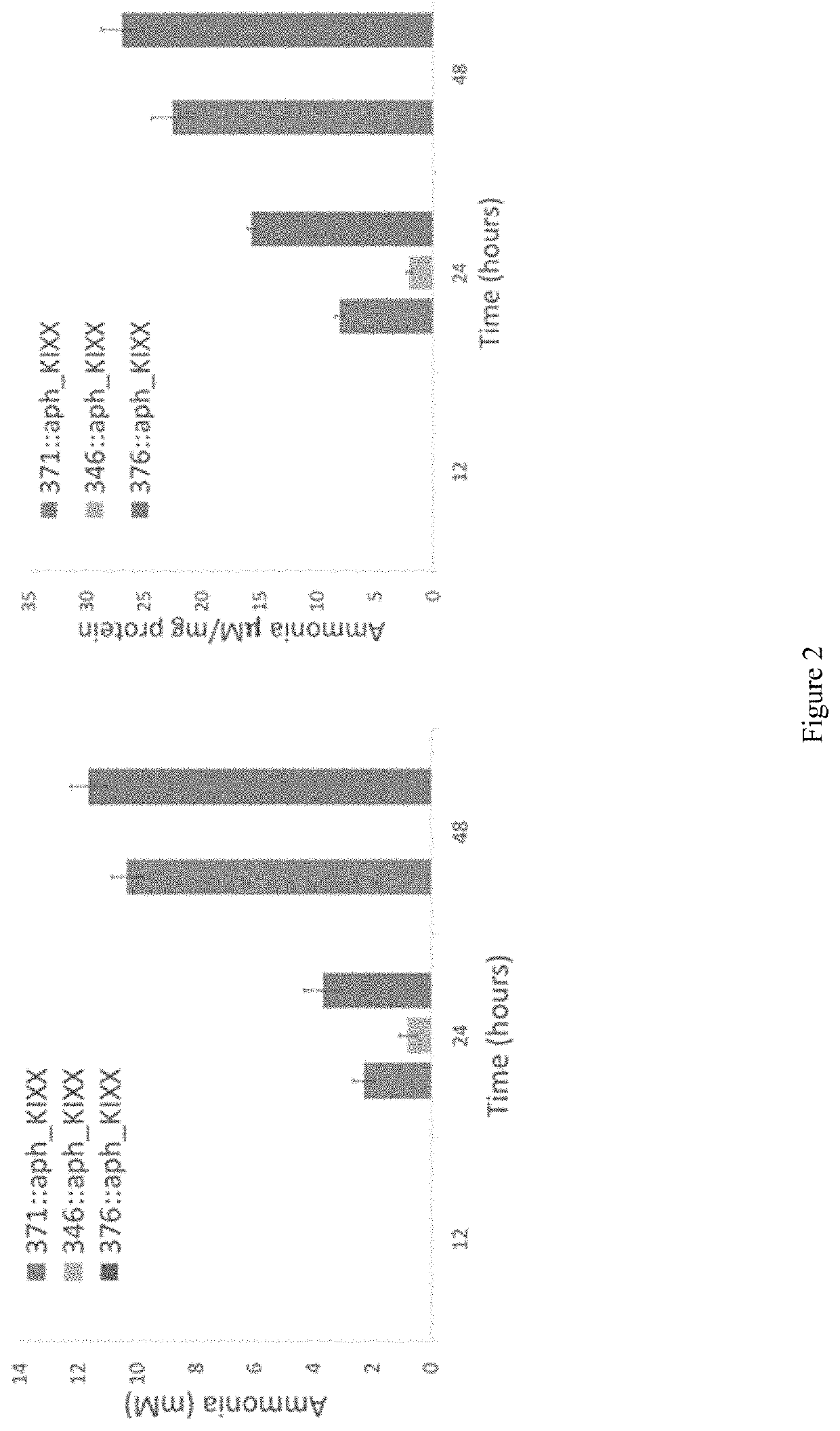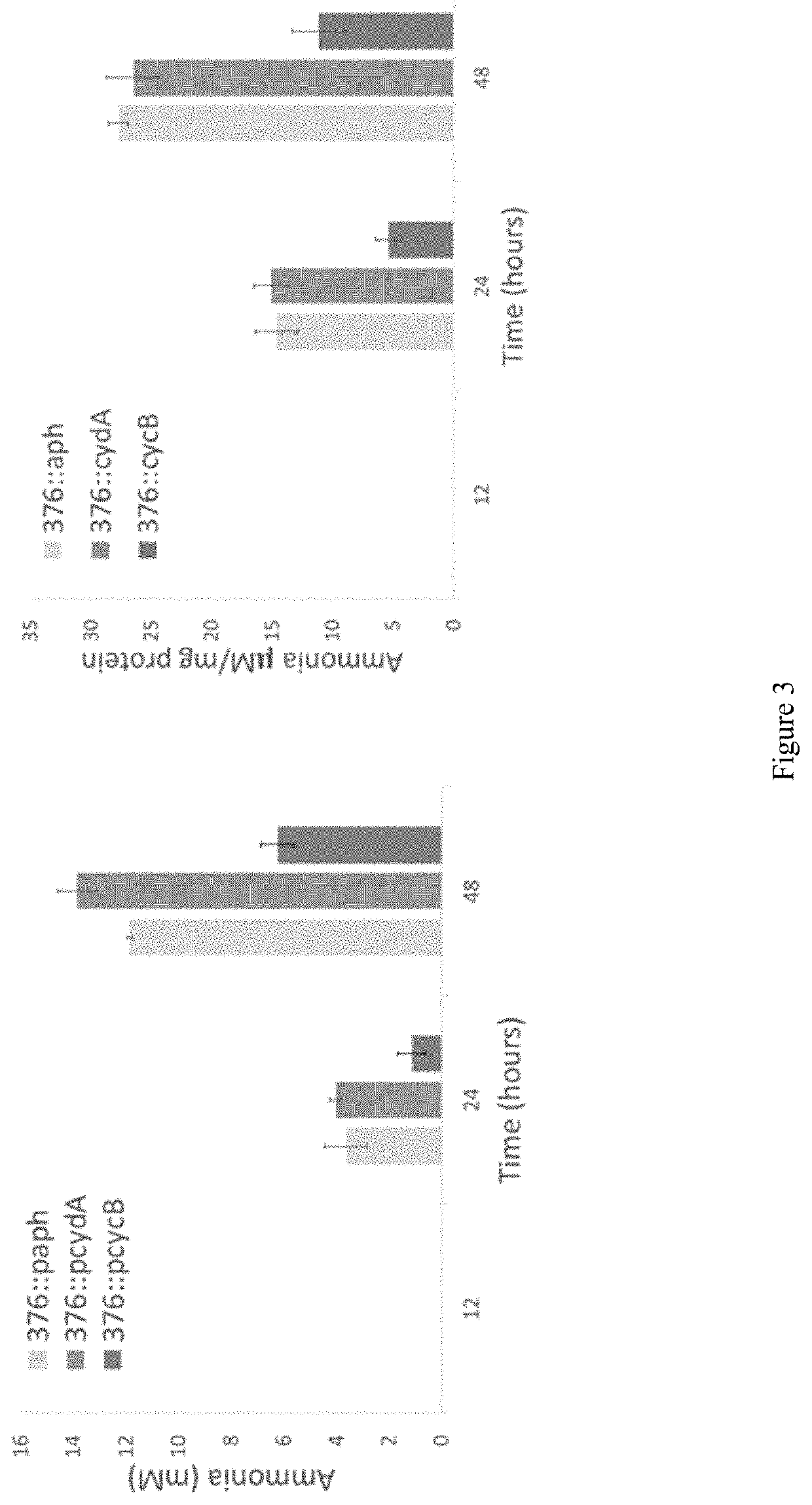Genetically Modified Nitrogen Fixing Bacteria and Uses Thereof
- Summary
- Abstract
- Description
- Claims
- Application Information
AI Technical Summary
Benefits of technology
Problems solved by technology
Method used
Image
Examples
example 2
[0219]Transfer of Ammonia from Engineered Mutant Strains to Crop Plants
[0220]In this example, we demonstrate, using 15N2 gas enrichment experiments, that the Azotobacter vinelandii nifL mutants disclosed in Example 1 can facilitate the uptake by non-leguminous plants (in this case, rice) of substantial amounts of nitrogen originating in the atmosphere. The atmospheric nitrogen is fixed into the soil as excreted ammonia, as described in Example 1 above.
[0221]Accordingly, this example provides “proof of principle” that the disclosed ammonia excreting mutants can be used in inoculants / biofertilizers that can be applied to soil, plants or seeds to enhance the growth of the plants, by providing a source of bioavailable nitrogen. This would substantially decrease the need for applying chemical nitrogen fertilizers to provide bioavailable nitrogen. This is a significant advance for the sustainable production of non-leguminous crop plants that are not capable of forming symbiotic relationsh...
example 3
[0238]Transfer of Ammonia from Engineered Mutant Strains to Mycorrhizal Fungi
[0239]Mycorrhizal fungi have been shown to acquire nitrogen from the soil (in the form of ammonium / ammonia) and transfer it to plants. In this example, we demonstrate, using 15N2 gas enrichment experiments, that the Azotobacter vinelandii nifL mutants disclosed in Example 1 can facilitate the uptake by mycorrhizal fungi of large amounts of atmospheric nitrogen that is fixed by the mutants as excreted ammonia, as described in Example 1 above.
[0240]Accordingly, this example provides “proof of principle” that co-cultures of the disclosed ammonia excreting mutants and mycorrhizal fungi can also be used in inoculants / biofertilizers that can be applied to soil, plants or seeds to enhance the growth of the plants, by providing a source of bioavailable nitrogen.
[0241]More specifically, this data suggests that the disclosed nifL-modified diazotrophic γ-proteobacteria can be combined with mycorrhizal fungi to transfe...
example 4
Ammonia Excreting Strains are Supported by Multiple Different Carbon Sources
[0246]A. vinelandii can use a variety carbon sources as growth substrates which can be found in root exudates of plant crops. The ability of A. vinelandii to excrete ammonium ion using glucose, sucrose, and galactose as different carbon sources has been tested. Our data showed that glucose, sucrose and galactose can support ammonium ion release from the ammonia excreting ΔnifL strains. The ability of the different ammonia excreting ΔnifL strains to grow on different carbon sources and release ammonium ion can be used to force the dependence of these strains on root exudates, thereby promoting the colonization of roots and reducing the persistence of bacteria in the environment after the growing season.
[0247]Materials and Methods
[0248]Culture supernatants of wild-type strain (wild-type strain; obtained from Dennis Dean, Virginia Tech, VA, USA) (Setubal et al., 2009) and nifL (this study) mutants grown aerobic...
PUM
| Property | Measurement | Unit |
|---|---|---|
| Strength | aaaaa | aaaaa |
Abstract
Description
Claims
Application Information
 Login to View More
Login to View More - R&D
- Intellectual Property
- Life Sciences
- Materials
- Tech Scout
- Unparalleled Data Quality
- Higher Quality Content
- 60% Fewer Hallucinations
Browse by: Latest US Patents, China's latest patents, Technical Efficacy Thesaurus, Application Domain, Technology Topic, Popular Technical Reports.
© 2025 PatSnap. All rights reserved.Legal|Privacy policy|Modern Slavery Act Transparency Statement|Sitemap|About US| Contact US: help@patsnap.com



